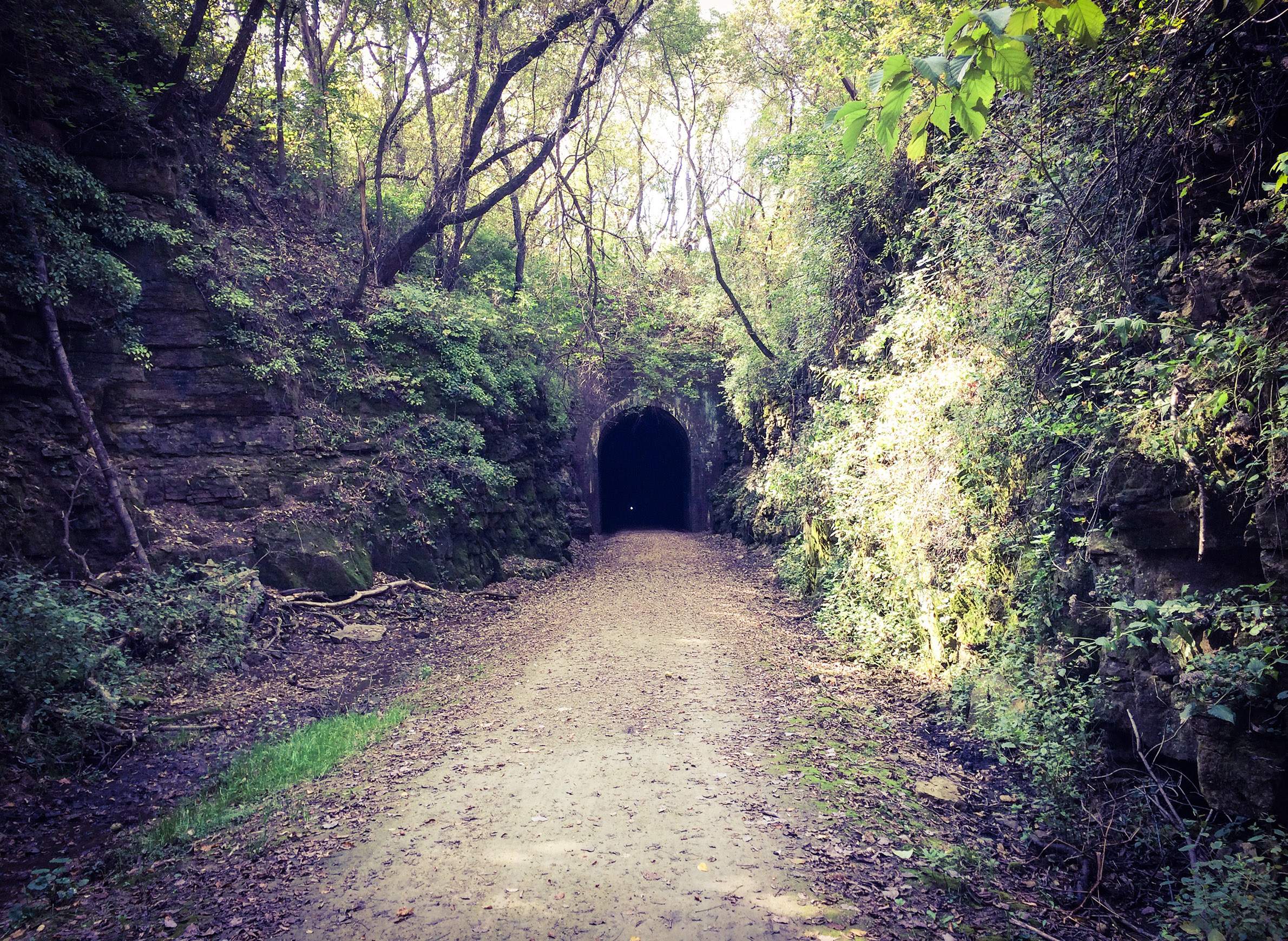
Recreational Trails Offer Connective Pathways Through Wisconsin History

As state trails snake around Wisconsin, they wind through cities, towns and farm fields, along lake shores and river banks, connecting communities to each other and providing a pathway to and from adjoining states.
One such trail offers a chance to learn the history of southern Wisconsin while enjoying a bike ride or walk along an old railroad bed.The 40-mile-long Badger State Trail begins at the Illinois border as a continuation of the Jane Addams Trail. It follows the Pecatonica River valley through Monroe, past Monticello, into Belleville and Fitchburg before meeting up with the Capital City State Trail in Madison.
Many contemporary recreational trails have their beginnings in the late nineteenth century as track beds for burgeoning railroads. The Badger State Trail traces its inception to the 1880s when rail lines were being developed around the Midwest. Fierce competition, challenging terrain and bankruptcies plagued a line that commenced in Freeport, Illinois and continued north into Wisconsin.
William Hauda, the president of the Friends of the Badger State Trail, recounted the trail's history in an April 21, 2015 presentation at the Wisconsin Historical Society. His talk was recorded for Wisconsin Public Television's University Place.
The Chicago, Madison and North Railroad Co. began work on the line in 1886, purchasing it after a number of smaller railroad companies ran into financial problems. This rail line didn’t quite make it to Madison. Other railroads serving the city were not interested in sharing their business.
In 1889, the Illinois Central Railroad took over and proceeded to build the Stewart Tunnel through a massive limestone ridge near Belleville. Nearby farmers and hired workers dynamited the stone and hauled out the debris, excavating a 1,200 foot long tunnel. It's named for one James Stewart of Lancaster, Pennsylvania, who was thrown from his buggy and died while checking out the proposed route.
Eventually trains gave way to other means of transportation, and in 2000 the Wisconsin Department of Transportation, the Department of Natural Resources and the South Central Rail Transit Commission signed an agreement to rail bank the corridor. The track beds were converted into recreation trails.
Not long after the trail opened, the tunnel's roof collapsed. Originally constructed with bricks, it was repaired with a galvanized metal bridge fitted to the curve of the tunnel. Sand was blown into the space between the metal and the bricks and the ends were then sealed, keeping bricks from falling on unsuspecting bikers and hikers in the tunnel.
The Badger State Trail pays tribute to the history of the communities it passes through. In Fitchburg, the trail offers a look at its early agricultural community. For a seven mile stretch, bikers can learn about John Stoner, the first farmer in Fitchburg, the eponymous Stoner Prairie and Stoner Schoolhouse, an old cheese factory and a large-scale dairy.
Key facts
- Tunnel towns were set up for the workers clearing the Stewart Tunnel. They were paid $1.50 per day and provided with a bunk bed at a cost of $3.00 a week.
- The DNR closes the tunnel in the winter due to ice caves that form at both of its ends.
- The last Illinois Central freight train passed through the rail line in 1981.
- Numerous trails converge at the Capital Springs Recreation Area, which is the head of the Badger trail near Madison. They include the Capital City trail, the Cannonball path, the Military Ridge State Trail and the Southwest Commuter path.
- The Trail Explorer program is a scavenger hunt hosted by the Friends of the Badger State Trail. It runs along the trail, on the connecting Sugar River State Trail, and on the adjoining Jane Addams Trail in Illinois. The Trail Explorer map has a list of questions to answer and objects to find as participants make their way through towns and countryside.
Key quotes
- On the rail line not connecting to Madison: "At one point in the history, two of the railroads that were already in Madison and established staked claims to track areas, and built their tracks parallel so that the Chicago, Madison and North couldn't serve their customers without their permission."
- On the competition for access to Madison: "There's stories about loads of poles, telephone poles being just dumped on the right-of way for the rail line to block construction."
- On the purpose of a rail bank: "It's a reserved corridor that someday could legally be reactivated. And we know we have a lot of interest in Madison on high speed rail, but nothing has been politically feasible or financially viable."
- On historic Fitchburg: "This old Fitchburg was a bustling town in the 1880s, 1890s. It had a general store, a dance hall, a lumberyard, a stockyard and there were eight trains a day that went through there. They hauled milk to the cheese factories, brought the cans back to the farmers, and all sorts of other agricultural business."
- On the convergence of trails in Fitchburg: "They did a roundabout, and it's the first bicycle roundabout I know about in the country."


